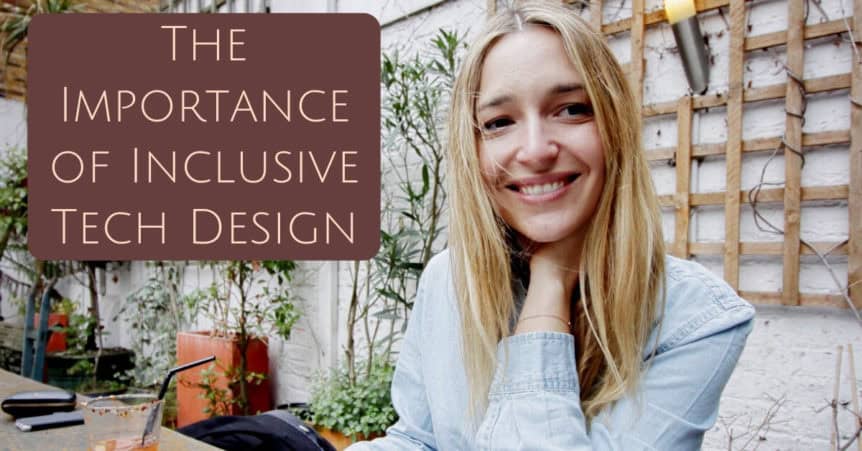- A Closer Look at Common Myths About Hearing Loss - May 7, 2024
- The Impact of Pets on Emotional and Hearing Health - April 26, 2024
- Strategies for Coping with Single-Sided Deafness - April 16, 2024
Design & Technological Advances that Help People with Hearing Loss
The World Health Organization (WHO) estimates that 360 million people worldwide lack some or all of their ability to hear. This number includes 32 million children, and one-third of people over 65 years old. Technological interventions have already progressed a long way in assisting this demographic with improved hearing, but they’re still not perfect. Hearing aids may lack the ability to translate certain frequencies and those who use them find certain devices uncomfortable. Recent technological advancements have progressed not only within early identification stages for hearing loss, but soon may provide newly innovative hearing interventions as well.
Improved Identification for Hearing Loss
Recently improved identification techniques allow for comprehensive testing to determine if hearing loss exists, even for the youngest populations, the amount and nature of the hearing loss, and the benefits that are possible. The following technological breakthroughs make it much easier to identify signs of hearing loss.
Universal neonatal hearing screening allows for testing the hearing of babies within the first 48 hours of life. This process helps identify hearing immediately, so that treatments can begin as soon as possible. Auditory brainstem response (ABR) testing is used within those populations that are difficult-to-test and for those with medical diagnosis of auditory disorders. It can be performed on anyone of any age. Both of these tests avoid the “too young to test” excuse of hearing evaluations.
Immittance testing is a type of screening tests that evaluate the middle ear function and nerve functions of the ear. Otoacoustic emissions testing examines the hearing nerves within the inner ear and helps identify the cause of hearing loss. Lastly, special auditory tests are conducted to identify the exact location of the auditory impairment.
Technology to Improve Communication for Those with Hearing Loss
Similar to the advancements in testing for hearing loss, there are also technological advancements that have been made for those living with hearing loss. Technology has greatly improved the world’s way of communication as seen through the vast array of communication applications and tools. Hardware, such as smartphones, and software have added value to how we communicate as a society. This also has transcended into the realm of hearing loss.
MotionSavvy, founded by a team of students from Rochester Institute of Technology’s National Technical Institute for the Deaf, released the world’s first two-way communication software for the deaf in 2015. Their software, called MotionSavvy UNI, translates American Sign Language (ASL) into speech, and then speech into text. This tool is useful for those who are deaf, but also for those with hearing loss as it also includes a voice recognition package for those who may not know or use ASL.
Solar Ear is a solar powered hearing aid battery that costs much less than what traditional batteries cost. They help provide a need for those in low to middle income populations, and last much longer than traditional batteries.
ISEEWHATYOUSAY is a technology that captures spoken language on a smartphone, converts it to text, and sends the text to a remote user’s device. The company provides a specialized receiving device and also has begun offering application to receive text messages on smartphones and wearables.
Innovative Research on Hearing Loss
As technology has progressed identification techniques as well as communication advancements for those with hearing loss, continued research on newer more effective technologies in the future may be game changers for this population.
One such research is from professor of auditory neuroscience, Tobias Moser at the University Medical Center Göttingen. He is working to improve cochlear implant function by transforming it from an electric device into an optical one. This new technique would turn sound into light, which are flashed onto neurons, sending the information to the brain.
Other scientists are turning to other senses to encode information that is normally communicated audibly. Scott Novich, of Neosensory, is developing VEST, a project that uses sensory substitution to map out sounds onto the skin before the information is transmitted to our brains. The goal is to create a device that can be worn under clothing that may be more comfortable than hearing devices. According to Novich, VEST would not necessarily replace hearing aids, but could compensate for frequencies of sound that hearing instruments miss.
Moving beyond technological advances in hearing device development, some researchers are working directly on the body’s cell to restore hearing. Stefan Heller, a professor of otolaryngology at Stanford University, is researching how to revert inner ear cells to their earlier, functional state to be able to restore hearing.
If all goes as planned in such research, their discoveries wouldn’t offer a cure for hearing loss but could give people with hearing loss more options in improving their hearing. For more information on currently technological testing techniques or hearing loss equipment, reach out to New Leaf Hearing Clinic today!

